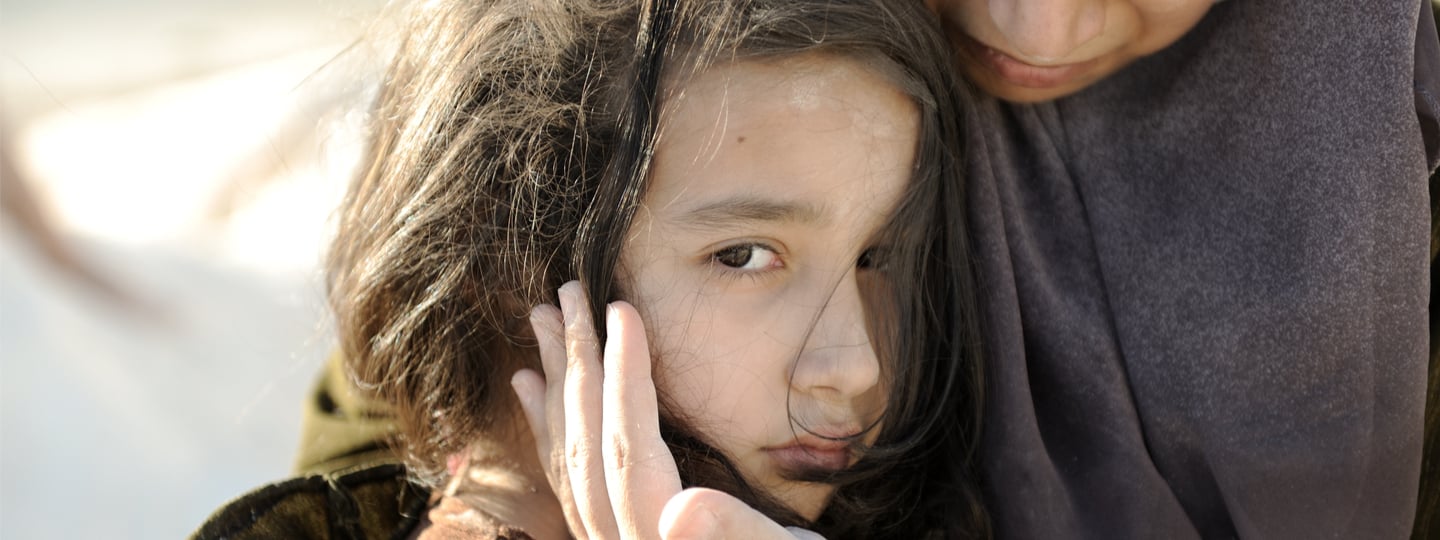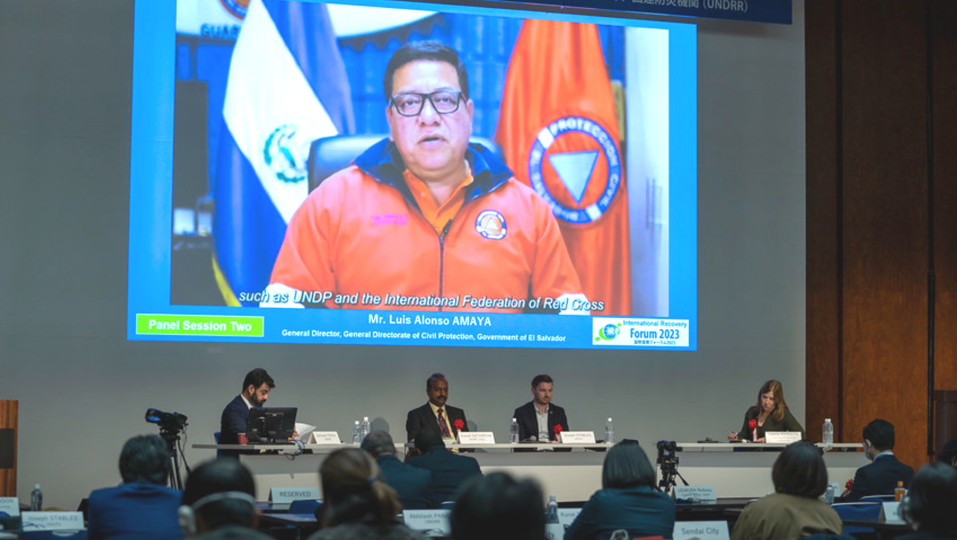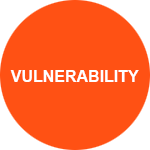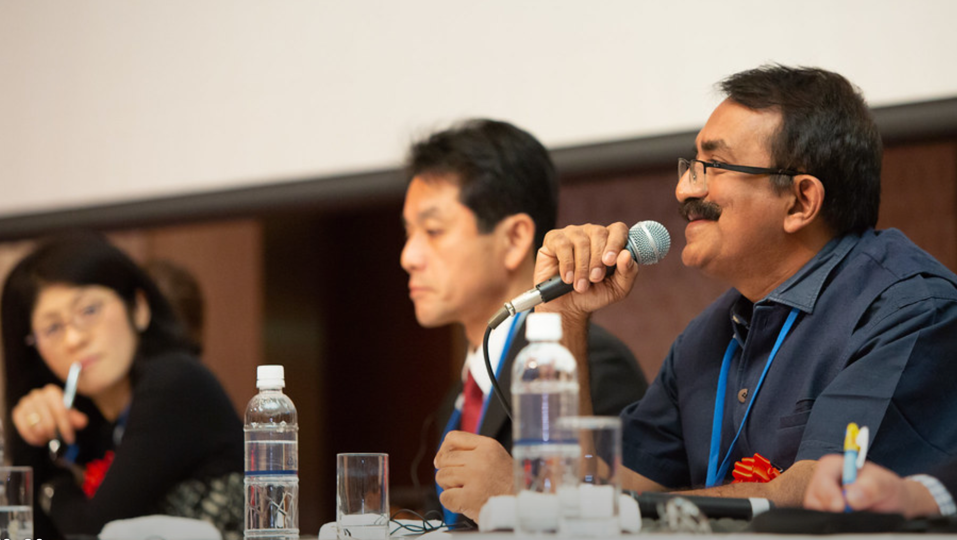Vulnerability
The characteristics determined by physical, social, economic and environmental factors or processes which increase the susceptibility of an individual, a community, assets or systems to the impacts of hazards.
UNDRR Terminology, 2017
Vulnerability is one of the defining components of disaster risk.
What makes people vulnerable?
Vulnerability is the human dimension of disasters and is the result of the range of economic, social, cultural, institutional, political and psychological factors that shape people’s lives and the environment that they live in.
Vulnerability can be a challenging concept to understand because it tends to mean different things to different people and because it is often described using a variety of terms including ‘predisposition’, ‘fragility’, ‘weakness’, ‘deficiency’ or ‘lack of capacity’.
Some definitions of vulnerability have included exposure in addition to susceptibility to harm. However, it is now understood that exposure is separate to the ‘susceptibility’ element of vulnerability since it is possible to be exposed, whilst at the same time not susceptible to natural hazards.
Despite some divergence over the meaning of vulnerability, most experts agree that understanding vulnerability requires more than analysing the direct impacts of a hazard. Vulnerability also concerns the wider environmental and social conditions that limit people and communities to cope with the impact of hazard.
Vulnerability is complex. Vulnerability is not simply about poverty, but extensive research over the past 30 years has revealed that it is generally the poor who tend to suffer worst from disasters. Poverty is both a driver and consequence of disaster risk (particularly in countries with weak risk governance) because economic pressures force people to live in unsafe locations (see exposure) and conditions. Poverty and the other multi-dimensional factors and drivers that create vulnerability mean that susceptibility to the impacts of hazards is often, but not always, associated with certain groups, including women, children, the elderly, the disabled, migrants and displaced populations, amongst others.
Vulnerability relates to a number of factors, including:
Physical factors
e.g. poor design and construction of buildings, unregulated land use planning, etc.
From transportation infrastructure such as roads, railways, ports, airports, and inland waterways, vital transport resources are encountering unprecedented challenges due to an already shifting climate. Despite this, the adaptation of transportation systems to the escalating risks posed by climate change has received limited attention. To bridge this gap, the UNECE (United Nations Economic Commission for Europe) has published a pioneering study that identifies critical sections of the primary inland transport networks and nodes in the Pan-European region and Canada, where the potential impact of climate risks is likely to grow.
Social factors
e.g. poverty and inequality, marginalisation, social exclusion and discrimination by gender, social status, disability and age (amongst other factors) psychological factors, etc.
Elderly individuals (aged 65 and above) are considered particularly susceptible to the effects of extreme temperatures. Both direct and indirect consequences of heatwaves and cold waves are linked to an increased prevalence of respiratory and cardiovascular diseases, impacting the mortality and morbidity rates among older adults. While many current definitions and assessments of vulnerability focus on general risks for the elderly, only a few delve into specific issues related to hot or cold weather.
A team of researchers employed an asset-based approach to create a General Vulnerability Index, which aims to identify the day-to-day vulnerabilities of older adults. This approach considers a wide range of human, financial, physical, place-based, and social assets, including health status, quality of life, education level, age of residence, access to public services, and more.
Economic factors
e.g. the uninsured informal sector, vulnerable rural livelihoods, dependence on single industries, globalisation of business and supply chains, etc.
As globalization becomes more prevalent, countries have increasingly depended on each other through a complex and interconnected food supply chain. The global pandemic caused by COVID-19, has underscored the vulnerability of this interconnection, exposing the entire process of bringing food from farms to people's tables worldwide to potential disruptions. A study has investigated strategies to ensure the resilience of food supply chains in the face of environmental shocks and has identified crucial areas for future research.
Environmental factors
e.g. poor environmental management, overconsumption of natural resources, decline of risk regulating ecosystem services, climate change, etc.
Heat waves and air pollution pose significant health risks, potentially becoming more frequent due to climate change. A research team from USC has contributed insights into these risks by analyzing six years of data on air quality, temperature, and death certificates. The findings reveal that compared to days without extreme conditions, the risk of death increases by 6.1% on extreme heat days and by 5% on days with extreme air pollution. However, on days experiencing both extreme heat and air pollution, the risk of death surges to 21%—a synergistic effect nearly double the impact of the individual exposures combined.
In addition, vulnerability is determined by historical, political, cultural and institutional and natural resource processes that shape the social and environmental conditions people find themselves existing within. These processes produce a range of immediate unsafe conditions such as living in dangerous locations or in poor housing, ill-health, political tensions or a lack of local institutions or preparedness measures.
Many of the underlying drivers of vulnerability, including poorly managed urban development, are increasing, resulting in vulnerability increasing in many countries and regions of the world. While evidence suggests that wealthier, well governed countries are able to reduce disaster risks, some countries have exhibited rapid economic growth in the last few decades without a commensurable rate of vulnerability reduction.
How humanitarian assistance practices may sometimes exacerbate vulnerability
A paper finds that a simplistic understanding of vulnerability - that people with higher losses are more vulnerable and deserve more assistance in comparison to those who suffer lower losses - tends to favour well-off people, as they own (and lose) more physical assets. This understanding is shared between various actors and stakeholders, enabling the elite to privilege themselves, both in terms of material benefits and influential positions.
Furthermore, the reliance of some local humanitarian organisations on external actors, such as national governments and donors for funding and legitimacy may further hinder contextual understandings of disaster vulnerability. These may result in failing to address the socio-political drivers of vulnerability but also can contribute to the exacerbation of vulnerability through reinforcing inequitable village-level and cross-scalar authority relations.
Read more
Why does vulnerability matter?
By including vulnerability in our understanding of disaster risk, we acknowledge the fact that disaster risk not only depends on the severity of hazard or the number of people or assets exposed, but that it is also a reflection of the susceptibility of people and economic assets to suffer loss and damage. Levels of vulnerability (and exposure) help to explain why some non-extreme hazards can lead to extreme impacts and disasters, while some extreme events do not. In the context of extensive risk in particular, it is often people’s vulnerability that is the greatest factor in determining their risk.
In the context of different hazards, some groups are more susceptible to damage, loss and suffering than others and likewise (within these groups) some people experience higher levels of vulnerability than others. Vulnerable groups find it hardest to reconstruct their livelihoods following a disaster, and this in turn makes them more vulnerable to the effects of subsequent hazard events. Consequently, we have to reduce vulnerability in order to reduce disaster risk.

How do we measure vulnerability?
Vulnerability is complex. It has many dimensions, it is driven by factors at different levels, from local to global, and it is dynamic as it alters under the pressure of these driving forces. Furthermore, the complex factors that make people vulnerable are not always immediately obvious.
The chain of causes of vulnerability, from the underlying drivers of vulnerability (e.g. socio-economic processes) to the immediate conditions that present themselves (e.g. poor quality housing), can be both long and complex; but by tracking it we can identify the progression of vulnerability that builds pressures on communities. These pressures can be released by taking measures to reduce vulnerability at various points along the causal chain.
Owing to its different facets, there is no one single method for assessing vulnerability. Ideally, any assessment should adopt a holistic approach to assessing vulnerability. In reality, methods are usually divided into those that consider physical (or built environment) vulnerability and those that consider socio-economic vulnerability.
Assessing the vulnerability of the built environment to hazards is extremely important in assessing potential consequences of an event and for mainstreaming disaster risk reduction into the local development planning process. Understanding the response of existing structures to potential hazards, such as ground shaking from earthquakes and wind from tropical cyclones, requires the knowledge of building materials and engineering practices. This information base can only be reliably and sustainably developed at the local level.
Local engineers are increasingly dedicating themselves to understanding the vulnerability of their local building stock (which varies significantly from country to country and within countries) to different natural hazards. Engineers in the Philippines and Indonesia, for instance, are developing vulnerability calculations relevant to their own national building stocks. However these examples represent the exception. Likewise, opportunities for damage and loss data collection (critical to understanding futures risks) following disaster events continue to be missed.
Efforts to quantify socio-economic vulnerability and poverty remain limited, and information of this kind is rarely integrated into risk assessments. Quantifying social vulnerability remains a challenge, but indicators and indices to measure vulnerability have been created (quantified and descriptive), ranging from global indicators to those that are applied at the community level. These indicators are usually used to track changes in vulnerability over time. Qualitative approaches to vulnerability assessment have focused on the assessment of the capacity of communities to cope with natural events. See a related story: Launch of GEM Global Social Vulnerability map.
Vulnerability analysis involves understanding the root causes or drivers of vulnerability, but also peoples capacities cope and recover from disasters.
At the community level, a number of researchers and humanitarian and development non-governmental organisations, as well as some local governments, have implemented vulnerability and capacity assessments (VCA), primarily through participatory methods. A VCA considers a wide range of environmental, economic, social, cultural, institutional and political pressures that create vulnerability and is approached through a number of different frameworks. According to Benson, VCA is typically applied as:
- A diagnostic tool to understand problems and their underlying causes.
- A planning tool to prioritise and sequence actions and inputs.
- A risk assessment tool to help assess specific risks.
- A tool for empowering and mobilising vulnerable communities.
By identifying their vulnerabilities and capacities, local communities identify strategies for immediate and longer-term risk reduction, as well as identifying what they can do themselves to reduce risk and where they need additional resources and external assistance.
How do we reduce vulnerability?
Since we cannot reduce the occurrence and severity of natural hazards, reducing vulnerability is one of the main opportunities for reducing disaster risk. Vulnerability changes over time because many of the processes that influence vulnerability are dynamic, including rapid urbanisation, environmental degradation, market conditions and demographic change. Many of these factors are rooted in changing local conditions, but the picture is incomplete without acknowledging the national and global socio-economic and political structures that constrain local development opportunities. This means that a coherent fight against vulnerability needs to take place at three scales: the local, national and international. See a related story: Retrofitting unused spaces can help South African cities adapt to climate change.
Approaches to vulnerability reduction include:
- Implementing building codes
- Insurance and social protection (risk)
- Emphasising economic diversity and resilient livelihoods
- Knowledge and awareness raising
- Preparedness measures
Rather than focusing only on what limits people's ability to reduce their risk, the policy objective of disaster risk reduction (DRR) instead emphasises understanding people's capacity to resist and recover from disasters, as well as enhancing the overall resilience of people, society and systems. The local and traditional knowledge vulnerable communities possess to respond to disasters should form the basis of outside interventions to reduce disaster risk.
Developing sustainable DRR capacities at national and local level requires that capacity locally generated, owned and sustained whilst also being the concern of society, rather than any single agency. Capacity development requires not only building technical capacities (such as environmental management) but also the promotion of leadership and other managerial and functional capacities. Finally, capacity development requires an enabling environment i.e. strong political ownership and commitment at the highest level.
Related stories
As two storms devastate Latin America, mapping the region's most vulnerable
"Direct Relief’s research team tracked the storm’s path and compiled population data to map which communities would be most at-risk in the aftermath of the storm."
Homes are flooding outside FEMA's 100-year flood zones, and racial inequality is showing through
"When hurricanes and other extreme storms unleash downpours, the floodwater doesn’t always stay within the government’s flood risk zones."
"If you don’t have time or money (or both), it doesn’t matter how many times authorities tell you to prepare. It’s not going to happen."
Related Sections on Preventionweb
Now that I understand the components of risk, what's next?

See recommendations to protect your community
In the policy and plans section of your country's main page on PreventionWeb, see what your national disaster management or civil protection agency is recommending to reduce disaster risk.
Make a case for disaster risk reduction
The business case for disaster risk reduction is clear. We’ve compiled key talking points and statistics to help you advocate for DRR. To make risk reduction benefits even more clear, we also created a fun game.
Find the right information
Need help finding the right case studies or data to help reduce your disaster risk? Try our advanced search using the search box below, or submit a request to the International Recovery Platform's build back better help desk.
Knowledge sharing in the private sector
Do you work for a business, or own one? By connecting a passionate community of business and other public and private partners, UNDRR's free ARISE program works as a catalyst for business innovation and for knowledge sharing to reduce risk for a sustainable and resilient future. Through its regional and national Networks, ARISE offers its members the opportunity to demonstrate leadership in cooperating with public partners to take risk-informed decisions, formulate adaptive strategies, and implement preventative actions.
Protecting towns, villages, and cities
UNDRR offers several free programs to help protect cities from disasters. Through delivering a clear 3-stage roadmap to urban resilience, providing tools, access to knowledge and monitoring and reporting tools, Making Cities Resilient 2030 (MCR2030) will support cities on their journey to reduce risk and build resilience. Any municipality can also create a free account to evaluate its progress in disaster resilience in detail using the online Disaster Resilience Scorecard for Cities.
Risk reduction plans for organizations of all kinds
The Voluntary Commitments initiative was launched to support the development of partnerships at all levels to implement the Sendai framework. The Sendai Framework recognizes that the State has the primary responsibility to reduce disaster risk, but it also underlines the shared responsibility of other stakeholders including local government, the private sector, academia and civil society.
Disaster loss tracking for national governments
The Sendai Framework online Monitoring tool has an important sub-system the Disaster Loss Data Collection tool (called “DesInventar Sendai”) which permits the creation and maintenance of fully compliant Loss Databases that can be used to gather the data required for the Sendai Framework's Global Targets A, B, C and D.
UNDRR is also launching a new disaster loss tracking tool in partnership with WMO and UNDP, to help governments understand the cost of disasters and climate change.
Case studies in preparedness
PreventionWeb collects concrete examples of communities that have protected themselves from disasters. You can find them on country pages, or by using our search.
Good practices in recovery and building back better
The International Recovery Platform (IRP) is a global partnership working to strengthen knowledge, and share experiences and lessons on building back better in recovery, rehabilitation, and reconstruction. It offers free help and resources on how to build back better to prevent disasters.





